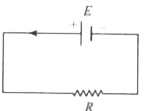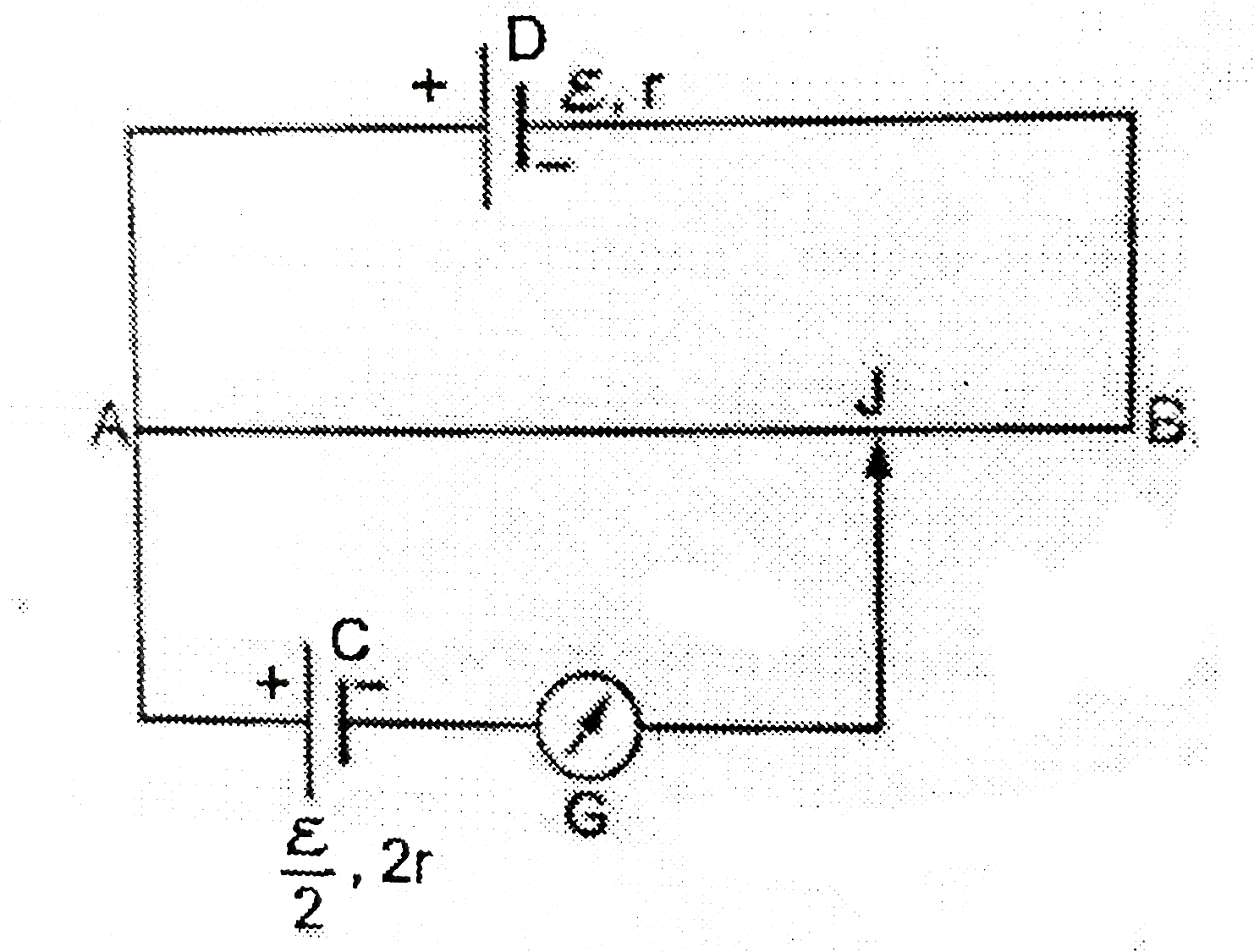Deduce the simple relation e=I(R+r) for the following circuit :

e = emf of the cell, R = external resistance and
r = internal resistance.
Let I be the current through the ciruit
e - the emf of the cell
R-ecternal resistance
r-internal resistance of the cell
emf of the cell = PD across R + PD across r
e=IR+Ir
e=I(R+r)
Topper's Solved these Questions
- BOOK - CENGAGE PHYSICSCHAPTER - SOURCES OF ELECTRIC CURRENTEXERCISE - MANDATORY EXERCISE (Exercise Set II)22videos
SOURCES OF ELECTRIC CURRENT
- BOOK - CENGAGE PHYSICSCHAPTER - SOURCES OF ELECTRIC CURRENTEXERCISE - MANDATORY EXERCISE (Exercise Set III)1videos
SOURCES OF ELECTRIC CURRENT
- BOOK - CENGAGE PHYSICSCHAPTER - SOURCES OF ELECTRIC CURRENTEXERCISE - OLYMPIAD AND NTSE LEVEL EXERCISES10videos
SOURCES OF ELECTRIC CURRENT
- BOOK - CENGAGE PHYSICSCHAPTER - REFRACTION OF LIGHT EXERCISE - OLYMPIAD AND NSE LEVEL EXCERCISES10videos
REFRACTION OF LIGHT
- BOOK - CENGAGE PHYSICSCHAPTER - STATIC ELECTRICITYEXERCISE - OLYMPIAD AND NTSE LEVEL EXERCISES10videos
STATIC ELECTRICITY
Similar Questions
A battery of emf ε and internal resistance r sends currents I1 and I2, when connected to external resistance R1 and R2 respectively. Find the emf and internal resistance of the battery.
View SolutionAn accumulator of emf ε and internal resistance r is first connected to an external resistance R1 and then to an external resistance R2 for the same time. For what value of r the beats dissipated in R1 and R2 will be same?
View Solution
Knowledge Check
- Question 1 - Select One
If E is the emf of a cell of internal resistance r and external resistance R, then potential difference across R is given as
AV=E/(R+r)BV=ECV=E/(1+r/R)DV=E/(1+R/r) - Question 2 - Select One

In the figure, the potentiometer wire AB of length L and resistance 9r is joined to the cell D fo emf E and internal resistance r. The emf of the cell C is E/2 and its internal resistance is 2r. The galvanometer G will show no deflection when the length AJ isA4L9B5L9C7L18D11L18 - Question 3 - Select One
An total resistance R is connected to a cell of internal resistance r the maximum current flows in the external resistance, when
AR=rBR<rCR>rDnone of the above
An accumulator of emf ε and internal resistance r is first connected to an external resistance R1 and then to an external resistance R2 for the same time. For what value of r the beats dissipated in R1 and R2 will be same?
View SolutionA cell of emf ε and internal resistance r gives a current of 0.5 A with an external resistance of 12Ω and a current of 0.25 A with an external resistance of 25Ω. Calculate (a) internal resistance of the cell and (b) emf of the cell.
View SolutionIn the given circuit, if the potential difference across the internal resistance r1 is equal to E, then the resistance R is equal to:
 View Solution
View SolutionTwo cells of emf E1 and E2 are joined in opposition (such that E1>E2) . If r1 be the internal resistances and R be the external resistance, then the terminal potential difference is
 View Solution
View SolutionA cell of emf ε and internal resistance r is charged by a current I, then
View Solution

